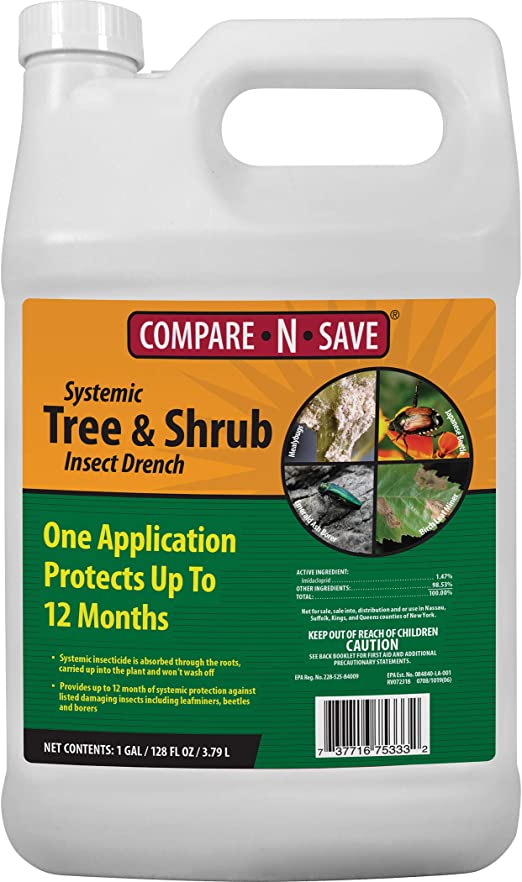Insecticide For Borers
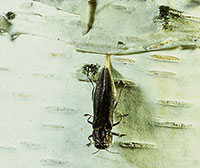
Figure 1: Bronze birch borer laying egg under bark crevice. Phtograph by David Shetlar, The Ohio State University. |
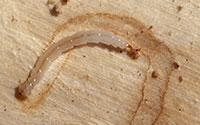
Figure 2: Bronze birch borer larva, a type of flatheaded borer. |

Figure 3: Emerald ash borer adult next to D-shaped exit hole. Photograph by David Shetlar, The Ohio State University. |
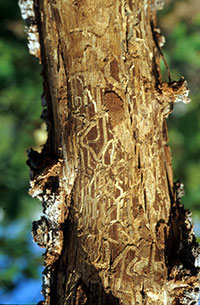
Figure 4: Extensive tunneling injuries produced by larvae of the Gambel oak borer. Photograph by David Leatherman. |
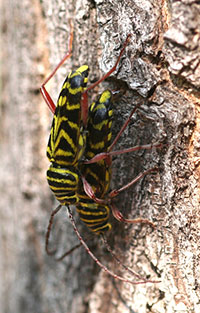
Figure 5: Mating pair of locust borers, a type of longhorned beetle. |
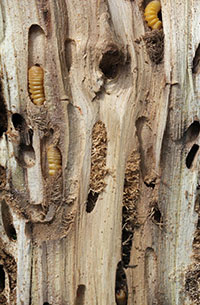
Figure 6: Locust borer larvae (roundheaded borers) and tunneling of black locust. |
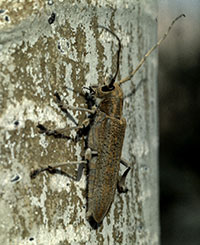
Figure 7: Poplar borer, a common borer of aspen. |
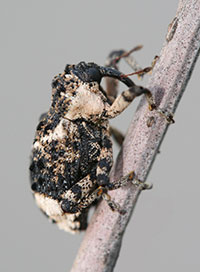
Figure 8: Poplar and willow borer, a type of weevil that develops as a borer in the stems of willows. |
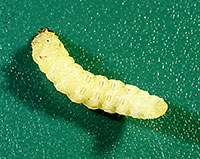
Figure 9: Larva of the peachtree borer. On the underside are several pairs of prolegs, tipped with an oval rig of small hook. That presence of prolegs distinguishes the borers that develop into moths. Phtograph by David Shetlar, The Ohio State University. |
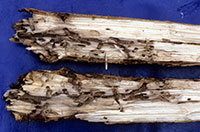
Figure 10: Damage to the base of an ash tree produced by lilac/ash borer. |
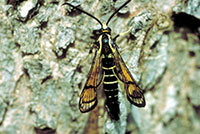
Figure 11: Adult male of the peachtree borer, a type of clearwing borer. |
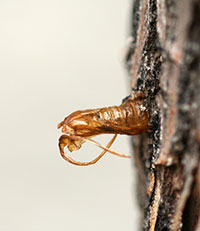
Figure 12: Pupal skin of the lilac/ash borer remaining extruded from the trunk after the adult emerged from the tree. |
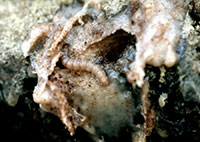
Figure 13: Larva and damage by the pinyon pitch mass borer. |

Figure 14: Adult of the Zimmerman pine moth. Photograph by David Shetlar, The Ohio State Univerrsity. |
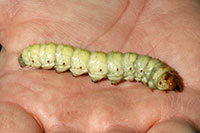
Figure 15: Larva of the carpenterworm. |
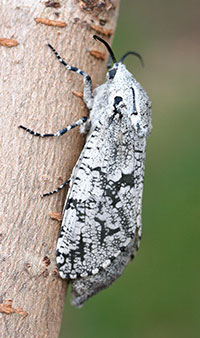
Figure 16: Adult of the carpenterworm. Photograph by David Leatherman. |
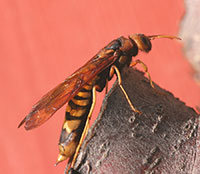
Figure 17: Adult of the pigeon tremex. |
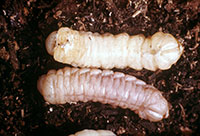
Figure 18: Larvae of the pigeon tremex. |
With very limited exceptions it is not possible to control wood borer larvae that have already entered the plant where they become well protected. However, all wood borers will emerge from the tree or shrub when they reach the adult stage and become vulnerable to treatment. At this point insecticides sprayed onto the trunks can kill adults as they crawl on the bark and very young borers that emerge from eggs laid on the surface. This can prevent damage that could be produced by the next generation of the insect.
The types of insecticides that are effective for this purpose have fairly long persistence when applied to bark and should be capable of killing wood borers for several weeks. Presently three insecticides applied as bark sprays are used for control of wood borers: bifenthrin, permethrin, and carbaryl (Table 1).
The optimal timing for preventive trunk sprays is at about the time when the adult stages of the wood borer are first present. For some species, such as the lilac/ash borer, adults emerge and begin to lay eggs in mid to late Spring. Others emerge later and some only first become active on the outside of the plant beginning in midsummer. A summary of some of the more common wood borers, and their period of adult activity (flight period), is in Table 2.
Preventive trunk sprays are the easiest and cheapest means to effectively control almost all borers. A notable exception is emerald ash borer, the most aggressive and damaging wood borer in Colorado. Emerald ash borer is best controlled by use of certain systemic insecticides applied to the soil or as trunk injections.
Soil-applied systemic insecticides
The insecticide imidacloprid can move systemically within plant. When applied as a soil drench over the roots of a tree or shrub and watered into the soil imidacloprid can be used to control some kinds of wood borers.
The kind of borers that can be most effectively controlled by imidacloprid are flatheaded borers. These are a kind of beetle larva that feed in areas under the bark where imidacloprid will move in sufficient concentration to kill susceptible insects.
It will take some time for imidacloprid to be taken up by the plant, often 2-3 weeks. Therefore it is best applied around the time when the insects are beginning to lay eggs, or a little before. Critical to the use of this method is that the soil is kept moist enough for the insecticides to move to the roots. Systemic insecticides applied to dry soil will not be effective.
Many borers are not well controlled by soil applications of imidacloprid. Beetle larvae that spend much of the time in the interior of the trunk, such as roundheaded borers, will be little exposed to the insecticide. Imidacloprid is also not effective against larval stages of moths, such as clearwing borers, carpenterworms and pyralid borers.
Soil applications of imidacloprid can result in movement of some of the insecticide into nectar. This can then be collected by bees and other flower visiting insects. Therefore the use of this insecticide for borer control is discouraged on plants that produce flowers that are attractive to bees. (Lindens, crabapples, plums and some cherries are is a good examples of trees heavily visited by bees.) Strong language is present in the label instructions of most imidacloprid products and these must be followed to avoid risks to pollinators.
Trunk sprayed systemic insecticides
Insecticides containing the active ingredient dinotefuran (Safari, Transtect, Zylam) can be applied to the trunks and will then move systemically within the tree. These applications can be effective for control of wood boring beetles (metallic wood borers, longhorned beetles). There is insufficient information to know if these treatments can be reliably effective against wood borers that are caterpillars (Lepidoptera).
Dinotefuran trunk sprays may move more rapidly into trees than are insecticides used in soil application. Optimal time of application for borer control can be around the time of first expected adult emergence and egg laying or for a month or two after that period. However, on trees that produce flowers that are attractive to pollinators applications should be applied only after flowering, since this insecticide can move into nectar. Trunk spray applications require considerable expertise and should only be made by licensed pesticide applicators.
Trunk injected systemic insecticides
Some insecticides can move systemically in plants but must be physically injected into trunk. The most common insecticide used for this purpose is emamectin benzoate. Azadirachtin, a naturally derived product from seeds of the neem tree, can also control some borers when trunk injected. Both of these are presently used frequently in Colorado to control emerald ash borer.
Trunk injections require specialized equipment and considerable skill to be used effectively and not cause undue wounding. These can only be done by trained pesticide applicators and are often far more expensive than trunk sprays. However, the insecticides used for trunk injections can control most kinds of wood borers and emamectin benzoate may provide reliable control for 2 or 3 years. Trunk injections also become more attractive when there are conditions at a site that prevent use of sprayed or soil-applied insecticides.
Insecticide For Borers
Borers are the most common cause of tree mortality in the United States. They create galleries (narrow tunnels) through the bark that allow them to feed on the sapwood and heartwood of trees. The galleries can weaken the tree’s structure and lead to its death.
The burrowing activity of borer insects causes damage by weakening and girdling the trunk or branches of a tree, and by making holes which allow entrance for other insects which may cause more severe damage.
List Of Insecticide For Borers
- ACECAP Systemic Tree Implants 98.9% Ace hate 10 Pack 12ea Easy to use systemic insecticide implants for control of destructive pests of ornamental trees
- Applied in spring, the treatment will provide season-long control of many insects, including Aphids, Bagworms, Borers, Budworms, California Oak worm, Cankerworm, Case bearer, Elm Leaf Beetle, Gypsy Moth etc.
- The sap flow dissolves the chemical and carries it throughout the tree in 4 to 5 days. Ten implants will effectively treat up to a 14″ trunk diameter
- Systemic insecticide tree implants
- Contains 99 percent acephate, a highly effective systemic insecticide for broad spectrum insect control
- Acecaps are registered for use against aphids, bagworms, bronze birch borer, gypsy moth, tent caterpillar, wooly adelgid, and many more
- Easy to install; 5 implants per pack
- Provides readers with practical, easy-toaccomplish tips and tasks
Additional Info :
| Color | Brown |
- 12 MONTH PROTECTION: With just one application, kills listed insects and prevents new infestations for up to a year
- INSECT & PEST KILLER: Kills Japanese Beetles, Emerald Ash Borers, Adelgids, Leafminers, Aphids, Caterpillars, and more
- SLOW-RELEASE FERTILIZER: Plant food and fertilizer improves the health of your trees and shrubs
- SYSTEMIC PROTECTION: Protects your potted and outdoor trees and shrubs from the roots to the stem of every leaf
- RESTRICTIONS: Product intended only for non-bearing fruit and nut trees. Non-bearing fruits and nuts are plants that do not bear edible fruits and nuts for at least 12 months after application of pesticides. Not for sale in NY, CT, MD & VT.
Additional Info :
| Color | Concentrate |
| Item Dimensions | |
| Height | 10.3 Inches |
| Width | 2.7 Inches |
| Length | 4.7 Inches |
| Weight | 2.3 Pounds |
- INSECT KILLER – This pest control is great for use on adelgids, aphids, bronze birch borers, emerald ash borer, leaf miners, scale, and many other species of bug. Will also prevent new infestations.
- SOIL DRENCH APPLICATION – Concentrate dissolves in water allowing the insecticide to move through the root zone. Once in the roots, it moves up through the tree or shrub providing protection from insects. Also provides protection for new growth.
- FOLIAGE PROTECTOR – Designed for use on listed fruit, nut and ornamental trees and shrubs.
- WON’T WASH AWAY – Tree and Shrub Insect Control is rainproof within hours. For best results, spray with enough time for it to completely dry before it rains. Will not wash off after it has dried.
- EASY APPLICATION – Product quickly mixes with water and should be applied by pouring or with backpack, compression, knapsack or tank type sprayers. Carefully read and use according to label directions.
Additional Info :
| Color | LAWNGARD |
| Item Dimensions | |
| Height | 11.8 Inches |
| Width | 7.5 Inches |
| Length | 4.5 Inches |
| Weight | 8.2 Pounds |
- For use on outdoor trees and shrubs, including listed fruit and nut trees
- Controls aphids, emerald ash borers, Japanese beetles, birch leaf miners and other listed insects for up to 12 months with one application
- Insecticide absorbed through the roots and into the plant for protection that won’t wash off
- Mix 1.47-percent Imidacloprid concentrate with water and pour evenly around the base of the tree or shrub
- For use on outdoor trees and shrubs, including listed fruit and nut trees
- Controls aphids, emerald ash borers, Japanese beetles, birch leaf miners and other listed insects for up to 12 months with one application
- Insecticide absorbed through the roots and into the plant for protection that won’t wash off
- Mix 1.47-percent Imidacloprid concentrate with water and pour evenly around the base of the tree or shrub
- Mix 1.47-percent Imidacloprid concentrate with water and pour evenly around the base of the tree or shrub
Additional Info :
| Item Dimensions | |
| Height | 11.88 Inches |
| Width | 7.5 Inches |
| Length | 4.25 Inches |
| Weight | 8.6 Pounds |
- No chemical exposure to applicator or the environment
- Season-long control of tree pests, up to two seasons in evergreen trees
- 10 implants will treat a 14 inch diameter trunk
- Tools required to treat: tape measure, cordless drill with 3/8 inch bit, hammer and bolt or dowel rod
- Ready to install – no measuring of chemicals
Additional Info :
| Color | brown |
| Item Dimensions | |
| Height | 0.38 Inches |
| Width | 1.25 Inches |
| Length | 0.38 Inches |
| Weight | 0.1 Pounds |
